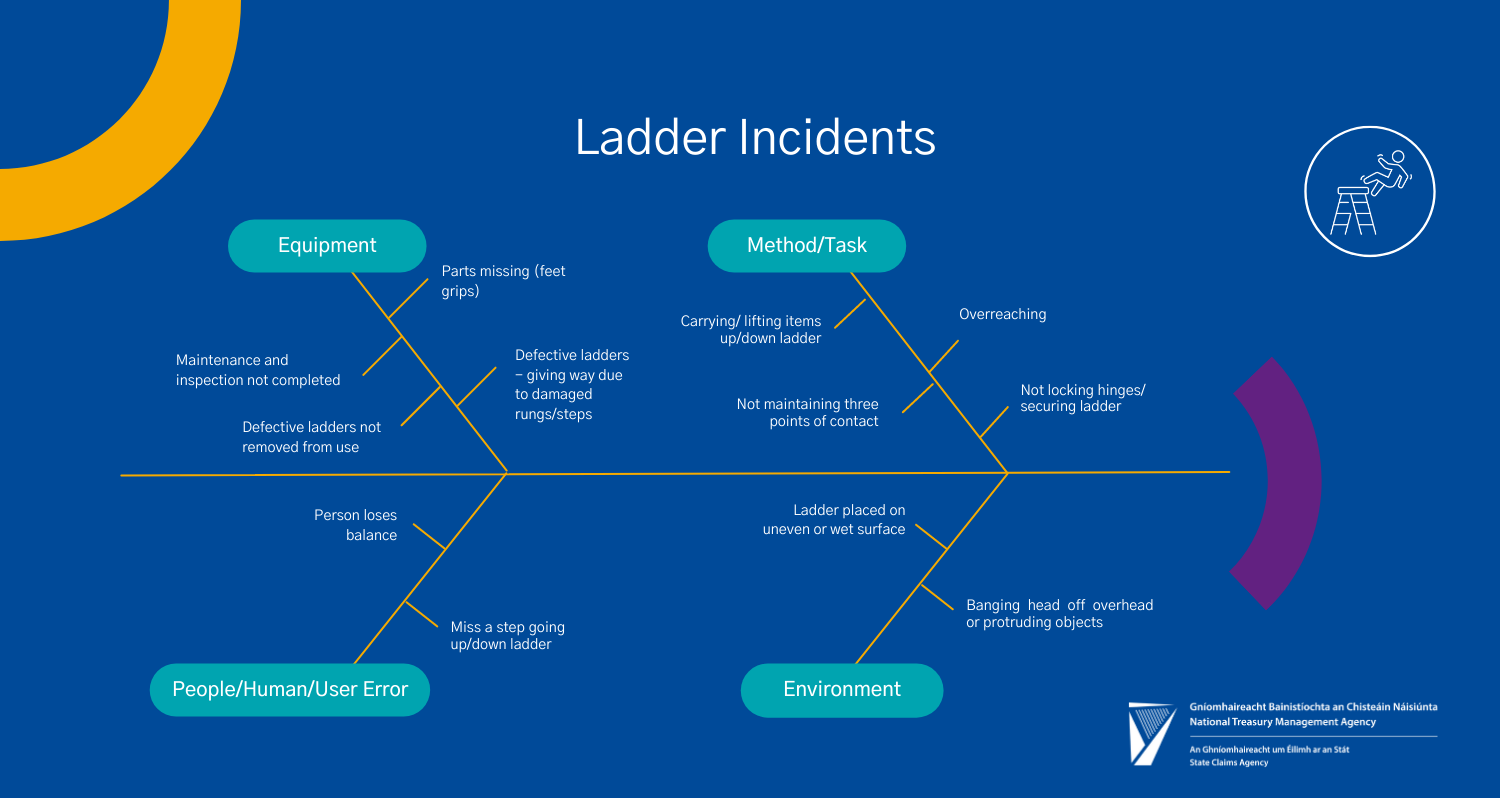Ladders are commonly used across State Authorities, however, falls from ladders account for numerous serious incidents and personal injury claims each year.


In the period 2012 to 2022, the State Claims Agency managed 72 claims relating to ladders, with an estimated liability of €4 million. In addition, there were 550 incidents of varying severity reported on NIMS, the National Incident Management System2. The data shows a positive increasing trend in reporting of incidents associated with the use of ladders.
A hygiene attendant in a hospital, was retrieving bin bags from a high shelf, when they became unbalanced on a ladder and strained their back. On investigation it was found that the ladder was damaged, and a ‘Do Not Use’ sign had been placed on it. However, at the time of accident the sign was removed. The employee has not returned to his role due to ongoing medical issues. The total paid on the claim was in the region of €450,000 - €455,000.
Example Incident
Ladder incident fishbone analysis
The most common types of ladders used by State authorities include straight/leaning ladders and stepladders with mobile ladders and telescopic ladders also used.
Our analysis shows that incidents involving ladders most commonly have the following root causes:
- Equipment issues
- Method/task
- People/human/user errors
- Environment
The below fishbone diagram shows the types of ladder incidents occurring, based on our analysis of reported ladder incidents:

Managing ladder risks
The Safety, Health and Welfare at Work (General Application) Regulations 2007 (Part 4: Work at Height) requires work at height, including the use of ladders to be risk assessed and the appropriate controls put in place. A work at height policy should be developed in conjunction with a comprehensive risk assessment. It should include the following steps:
- Assess the activity to determine if a ladder must be used to carry out the activity. If the hazard cannot be eliminated and a ladder must be used consider the most appropriate type of ladder for the activity. Completing a risk assessment and method statement will help identify the appropriate ladder for the activity and suitable training and information in relation to safe ladder use.
- Before use
- Inspect the ladder to ensure it is free from damage or defects. Any ladder found to be defective should be removed from use immediately.
- Ensure there is a safe work area free from hazards and/or obstructions. A barricade or cordon may be used to keep traffic or footfall away from work area.
- Set up the ladder on safe and stable surface. If the ladder will be leaning against a surface, ensure the surface is sturdy and can support the weight of the ladder and worker.
- Always maintain three points of contact with the ladder and never lean or overreach while on the ladder.
- Report and investigate any incidents or near misses that occur.
Helpful Resources
- Safety, Health and Welfare at Work (General Application) Regulations 2007, Part 4: Work at Height
- Health and Safety Authority Using Ladders Safely Information Sheet
- The Ladder Association: Code of Practice and Safe Use of Ladders and Stepladders Guidance Document LA455
References available on request.







